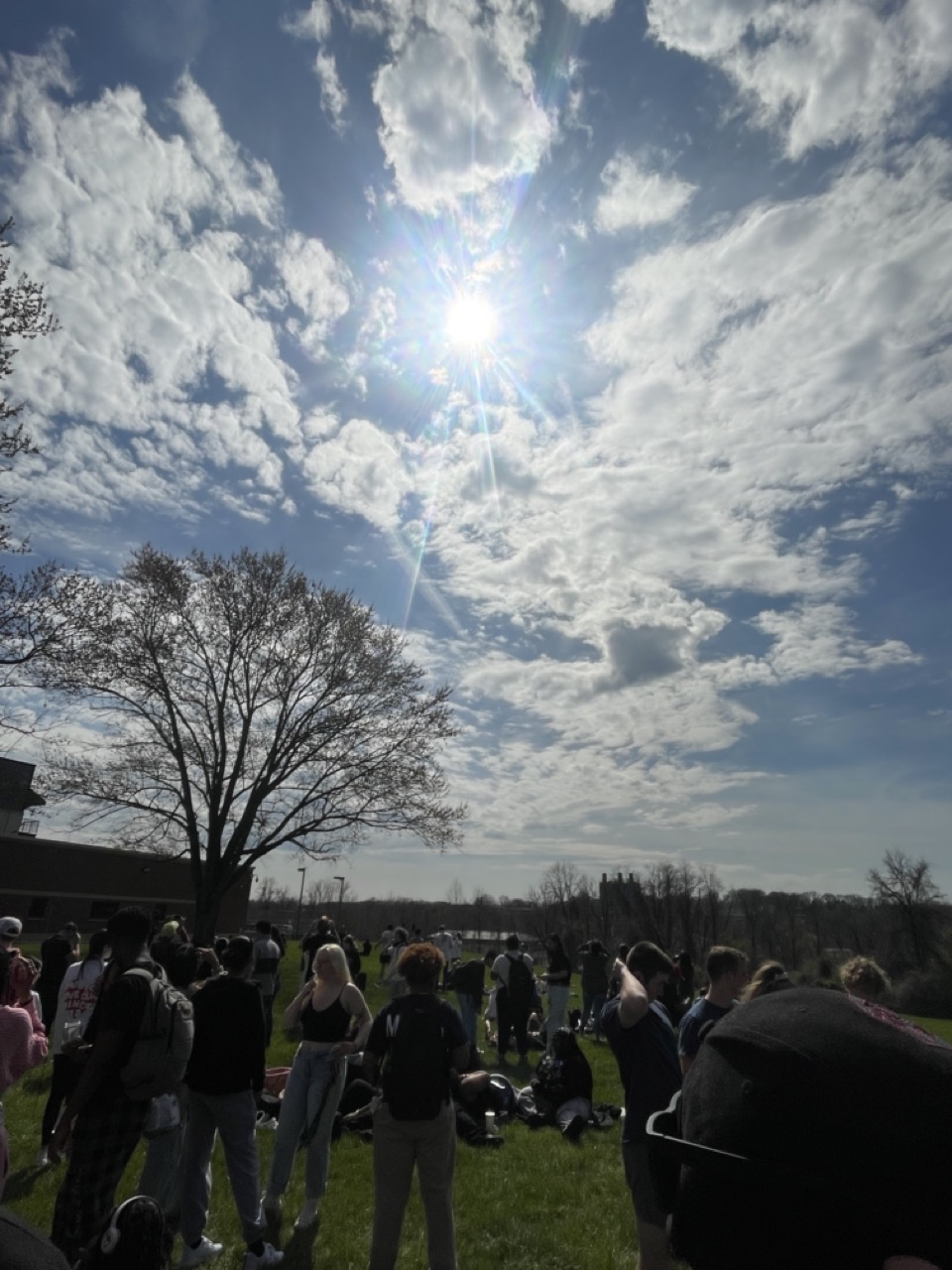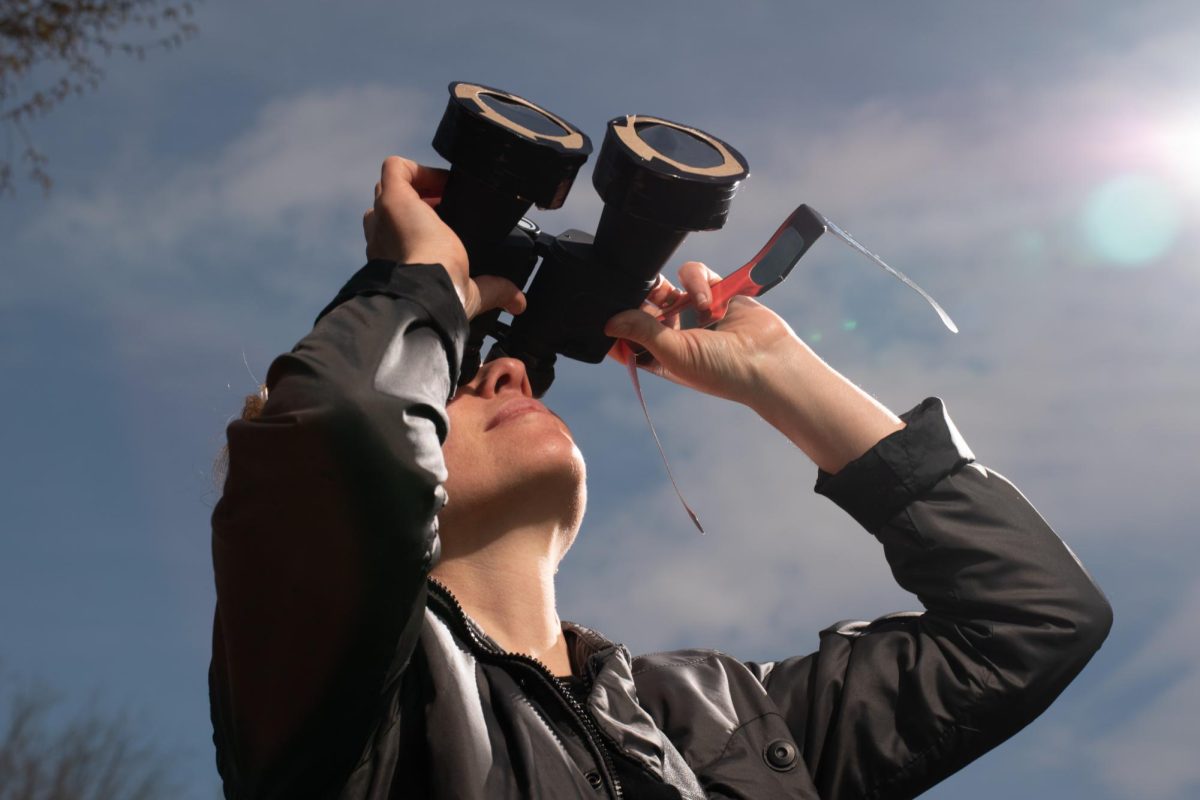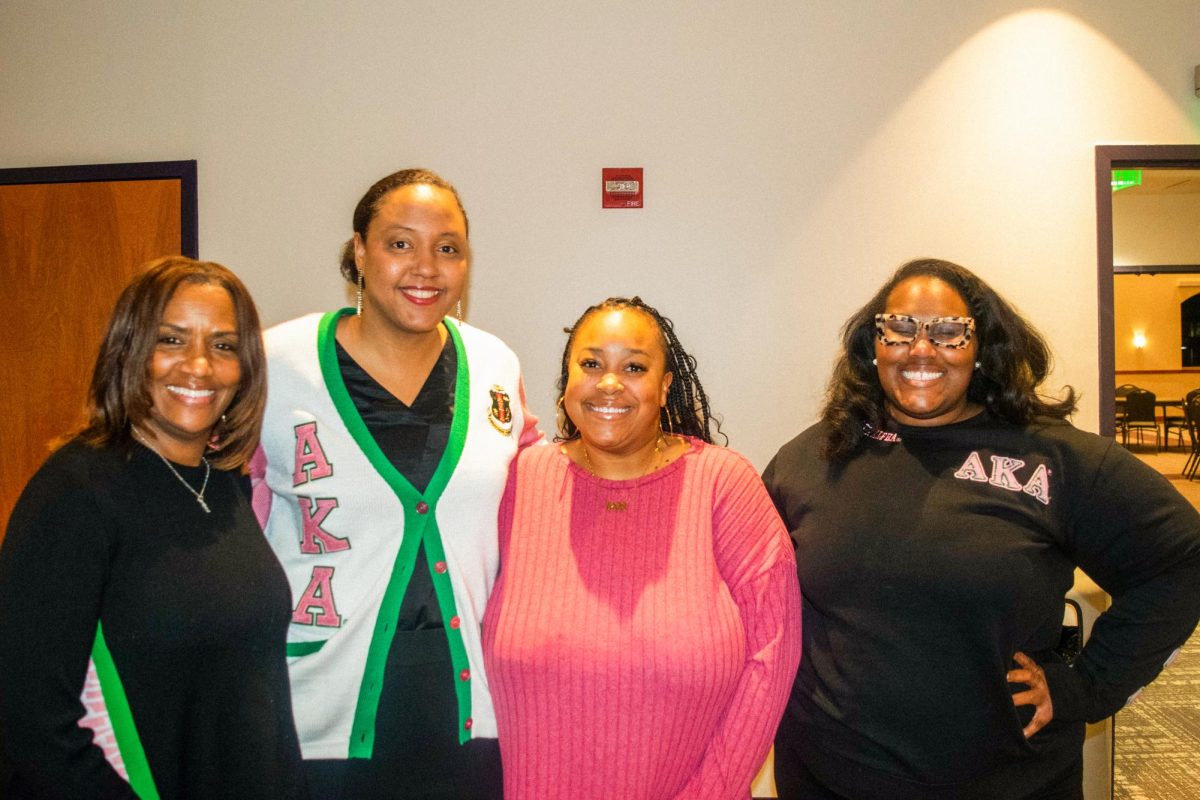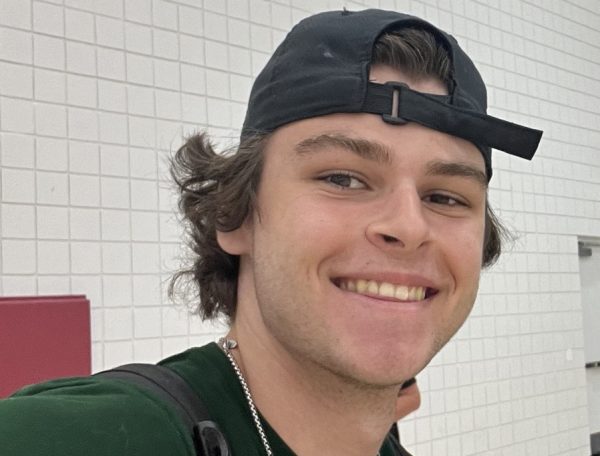While some spectators fear a plague of earthquakes and the end of the world as we know it, up to 3.7 million others traveled from all over the country to view the 2024 solar eclipse in totality from within a thin strip of the American Midwest.
A more modest gathering of 250 to 300 students, faculty and staff gathered just north of the Manning Academic Complex at Stevenson to take part in the School of Sciences Spring Spectacular. Food, science demonstrations, and free eclipse glasses were available from 2-4 p.m.
From about 2:05 to 3:21 p.m., the solar eclipse slowly approached its peak where in Maryland, the moon covered up to 90% of our view of the sun.
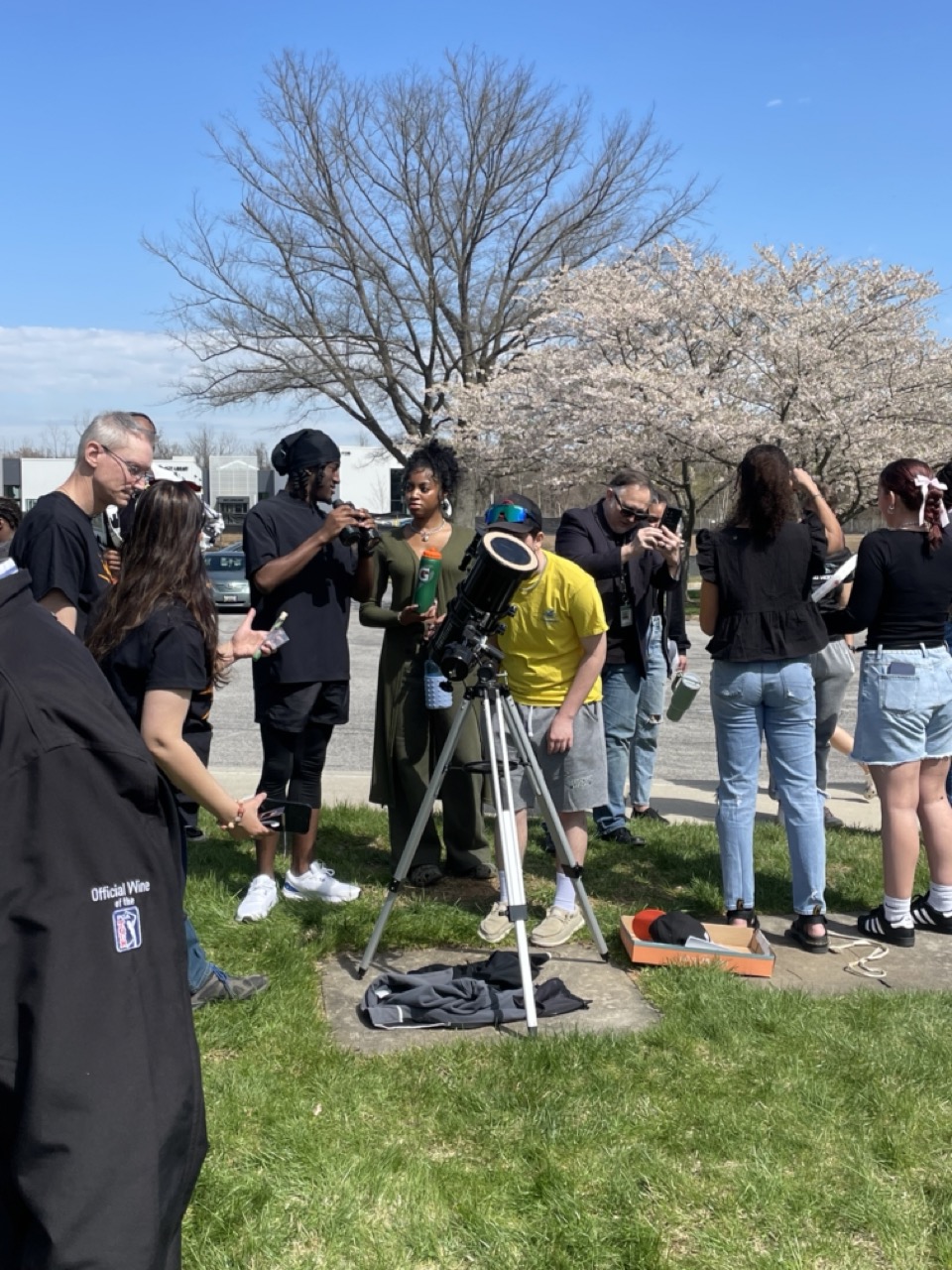
At the event’s eighth annual celebration, faculty and students alike were thrilled for the opportunity to celebrate science outside of the typical classroom setting.
“Most of the time students interact with math and science inside the classroom and a lot of the beauty of STEM is left to the imagination,” Associate Professor of Mathematics Benjamin Wilson said.
The solar eclipse this afternoon, April 8, might have been the last one easily visible in Maryland for anywhere between 20 and 50 years, depending on the visibility of the next projected eclipse in 2045.
Along with popcorn, ice cream, glass art, and a host of other fun activities was a large telescope manned by Stevenson Professor of Physics Neal Miller. The telescope was specially configured to be able to view the eclipse. For Miller and other enthusiastic scientists around the world, this is a fascinating event because so many factors have to happen in order for us to view the eclipse.
“When the moon is in its orbit going around the earth and when it goes in front of the sun, it blocks the sun,” Miller said. “It is such a rare occurrence because the moon is not very large, and it can only occur in the new phase. We are lucky today that a lot of America gets to view the eclipse in its totality, and here in Maryland at about 90% coverage.”
Spread throughout the field beside the MAC were people wearing some interesting looking shades. These weren’t just any sunglasses. They were made of cardboard and specifically designed for eclipses by meeting a standard set by the International Organization for Standardization in order to ensure that viewers’ eyes are protected.
“You think that because the moon is covering up to 90% of the sun that you are good to look at it,” Miller said. “The problem is that the surface brightness hasn’t changed, the sun is every bit as bright as if it wasn’t covered, there is just less area covered, but it can still damage the eyes.”
Students were loving not only the rare event in the sky, but the celebration the School of Sciences put on, making it a true day to remember at Owings Mills North campus.
“It’s only 3:00 and it’s getting darker and darker as the day goes on which I think is really cool. It kind of gives an eerie feeling out here,” Stevenson senior Dez Myers said. “Everybody is out here having a good time though. We’re throwing frisbees, got the glasses out, eating candy, so it’s a vibe.”


